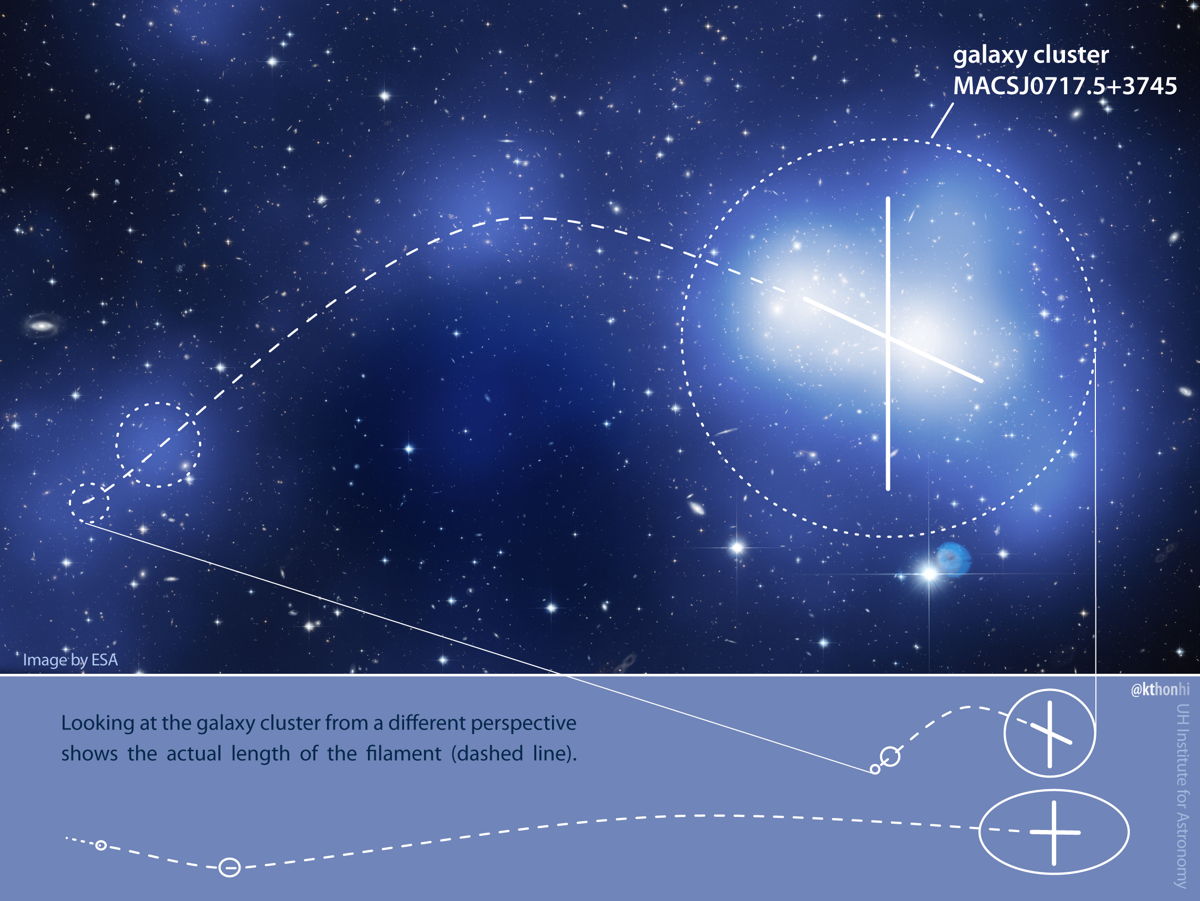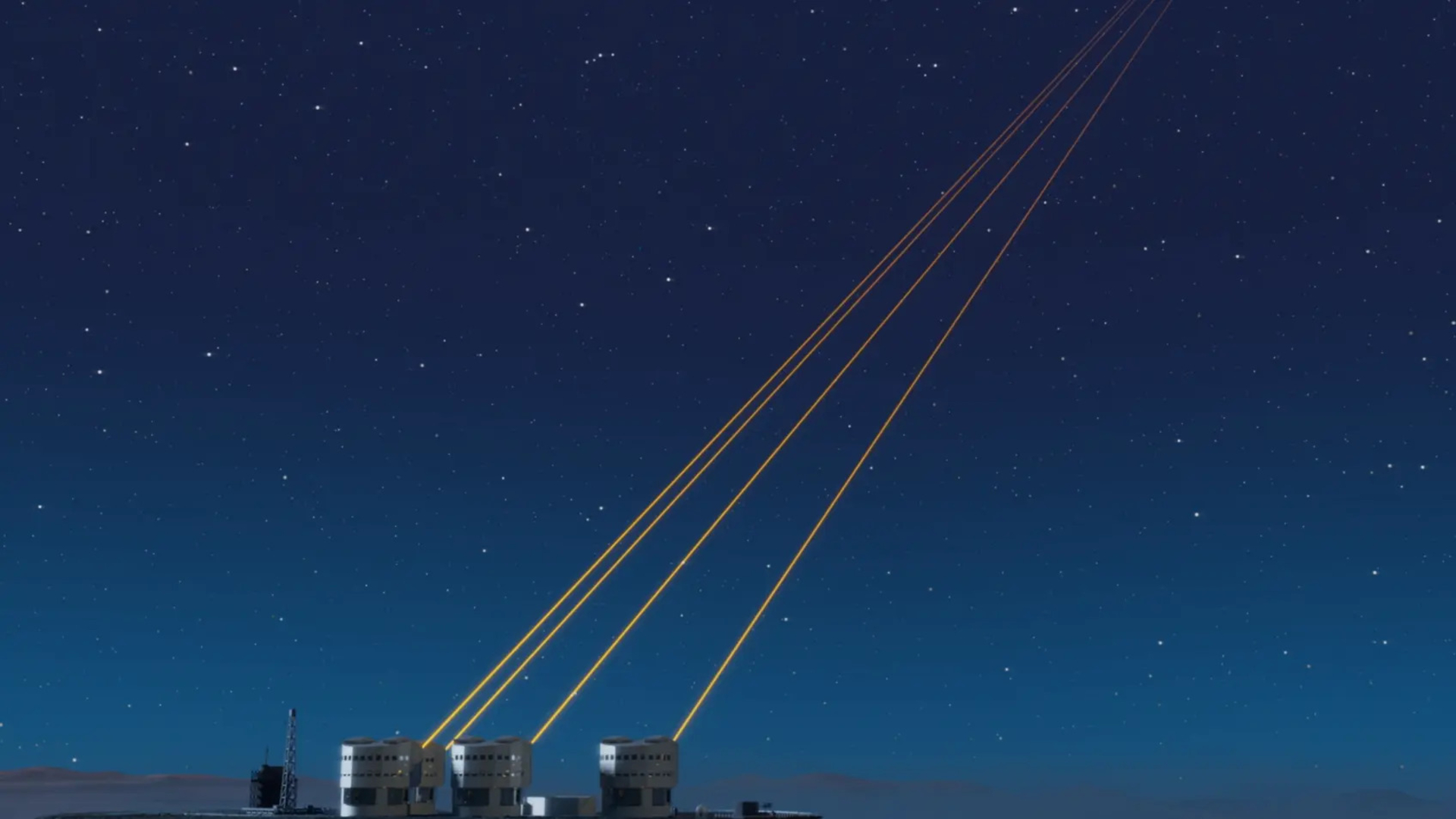Giant Strand of Elusive Dark Matter Seen in 3D

Astronomers have taken their first 3D look at a gigantic filament of dark matter, an invisible cosmic structure that can only be detected by its gravitational effects it has on its surroundings.
The universe is thought to be structured like a tangled web, with long strings of mostly dark matter intersecting at giant galaxy clusters. Since dark matter cannot be seen directly, these filaments are difficult to observe. But using the Hubble Space Telescope, astronomers have managed to probe one of the elusive cosmic strands in 3D.
The researchers sought out a 60 million light-year strand of dark matter around the massive galaxy cluster MACS J0717. The galaxy cluster is one of the largest yet seen and is about 5.4 billion light-years from Earth.
"From our earlier work on MACS J0717, we knew that this cluster is actively growing, and thus a prime target for a detailed study of the cosmic web," study researcher Harald Ebeling, of the University of Hawaii at Manoa, said in a statement Tuesday (Oct. 16). [Hubble's Dark Matter Strand View in 3D (Video)]
Ebeling and his fellow researchers analyzed images of the cluster from the Hubble Space Telescope, as well as Japan's Subaru Telescope and the Canada-France-Hawaii Telescope. They also used gravitational lensing techniques to map extent of the massive dark matter filament.
Albert Einstein's general theory of relativity holds that massive objects, including dark matter, warp space and time around them, causing light passing through to travel along a crooked path. Filaments thus distort the images of galaxies in the background and the researchers were able to convert the image distortions into a mass map for the string of dark matter extending from MACS J0717.
Additional observations from ground-based telescopes, allowed the astronomers to map the filament's structure in 3D, a first for astronomers. (Researchers say the first identification of a section of a dark matter filament was made earlier this year between the two galaxy clusters Abell 222 and Abell 223.)
Breaking space news, the latest updates on rocket launches, skywatching events and more!
The team found that the filament stretches back from the core of MACS J0717, almost along our line of sight from Earth.
With a length of 60 million light-years, the filament's sheer size is extreme, researchers said. If it is representative of other strands, then these strings might contain even more dark matter than theorists had predicted.
The study will appear in the Nov. 1 issue of Monthly Notices of the Royal Astronomical Society.
Follow SPACE.com on Twitter @Spacedotcom. We're also on Facebook and Google+.

Space.com is the premier source of space exploration, innovation and astronomy news, chronicling (and celebrating) humanity's ongoing expansion across the final frontier. Originally founded in 1999, Space.com is, and always has been, the passion of writers and editors who are space fans and also trained journalists. Our current news team consists of Editor-in-Chief Tariq Malik; Editor Hanneke Weitering, Senior Space Writer Mike Wall; Senior Writer Meghan Bartels; Senior Writer Chelsea Gohd, Senior Writer Tereza Pultarova and Staff Writer Alexander Cox, focusing on e-commerce. Senior Producer Steve Spaleta oversees our space videos, with Diana Whitcroft as our Social Media Editor.

